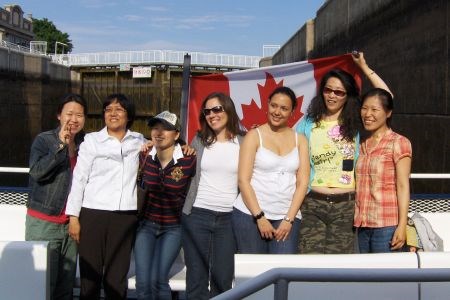As newcomers land in the Lock City as their adopted home of choice, the face of Sault Ste. Marie is experiencing a change in diversity. But the city is quickly learning that in order to keep its new citizens, a support system is required.
“It's not enough just to bring them here,” said Danny Krmpotich, executive director of the city’s Local Immigration Partnership (LIP). “You have to support them while they're here and give them the necessary supports to have them stay, or else they'll leave, and that's the bottom line.”
The LIP, comprised of 50 organizations that offer newcomers supportive services, is working on a number of initiatives to do just that. At discoverthesault.ca, immigrants can find information essential to integrating into the community.
Since its inception in 2009, the website has been translated into six languages and hosts a new video library, just launched in June. In it, newcomers give testimonials about their experiences in their new community, a cultural orientation video helps familiarize newcomers with Canadian customs and language, and a video relocation guide offers advice for those considering moving to the Sault, explained LIP executive assistant Melissa Ceglie.
“It was developed to allow even a potential newcomer to see this community prior to coming here,” she said. “It shows a lot of the buildings, so when you do have to come here and get your driver’s licence, you know already what that building looks like.”
Andrew Ross, general manager for enterprise services with the Sault Ste. Marie Economic Development Corporation (EDC), said working with the LIP allows the city to identify gaps in the labour market and business sector, and the EDC can help newcomers find their niche.
“Most of the time newcomers have come in, they knew what they wanted to do, it was just they didn’t know anything about starting a business in Canada or Ontario, and that’s where we took them from there,” Ross said.
The crop of new businesses popping up across the city has meant a growing diversity in expertise and cultural representation, he added.
Their success results in a positive economic impact to the Sault, but he agreed that supports are needed, both to attract and retain newcomers.
“By developing that infrastructure, then it starts to help us do our job to attract newcomers, because now we can say we have these services,” Ross said.
The LIP’s work follows a 2008 population and housing report that indicated the Sault’s workforce will dwindle in the next few years as baby boomers retire in larger numbers.
“Unfortunately, in Northern Ontario—and the Sault is included in that—we do not have sufficient numbers to take over those jobs,” Krmpotich said. “If we don’t re-populate, especially in the areas of skilled labour, we’re going to be in big trouble. You’re going to hear that with each and every one of the Northern Ontario cities.”
With its share of funding from Citizenship and Immigration Canada, the LIP developed a settlement strategy, which city council approved in June 2010. Chief among its recommendations is the creation of a newcomer welcome centre, a key factor in getting the Sault designated a ‘welcoming community.’
The welcome centre would act as a hub where newcomers could go to get all the information needed to integrate into the community. The establishment of the centre is still between two and five years off, Krmpotich said, but the LIP is aiming to get an interim service up and running more quickly.
In the meantime, the LIP will focus its efforts on education—teaching youth about diversity, cultural differences and empathy towards others—and business services, including awareness about workplace language, and helping newcomers with the goal of becoming Canadian citizens obtain immigrant status.
This coming February, the LIP will host a conference featuring guest speakers Jean Augustine, Ontario’s fairness commissioner, and Bruce Strapp, the former executive director of the EDC and current head of the Northern Ontario Heritage Fund Corp., to talk about immigration and how it can benefit Northern communities.
It’s through initiatives such as these that the LIP sees the Sault moving forward to become a more diverse, business-friendly community, and already the LIP is noticing a difference as more ventures crop up throughout the city.
“Every month it seems there's an announcement for (a new business) going up, and they're doing very, very well,” Ceglie said. “I think it has to do a lot with their being encouraged, because there are some supports there to let them know that it's possible.”




